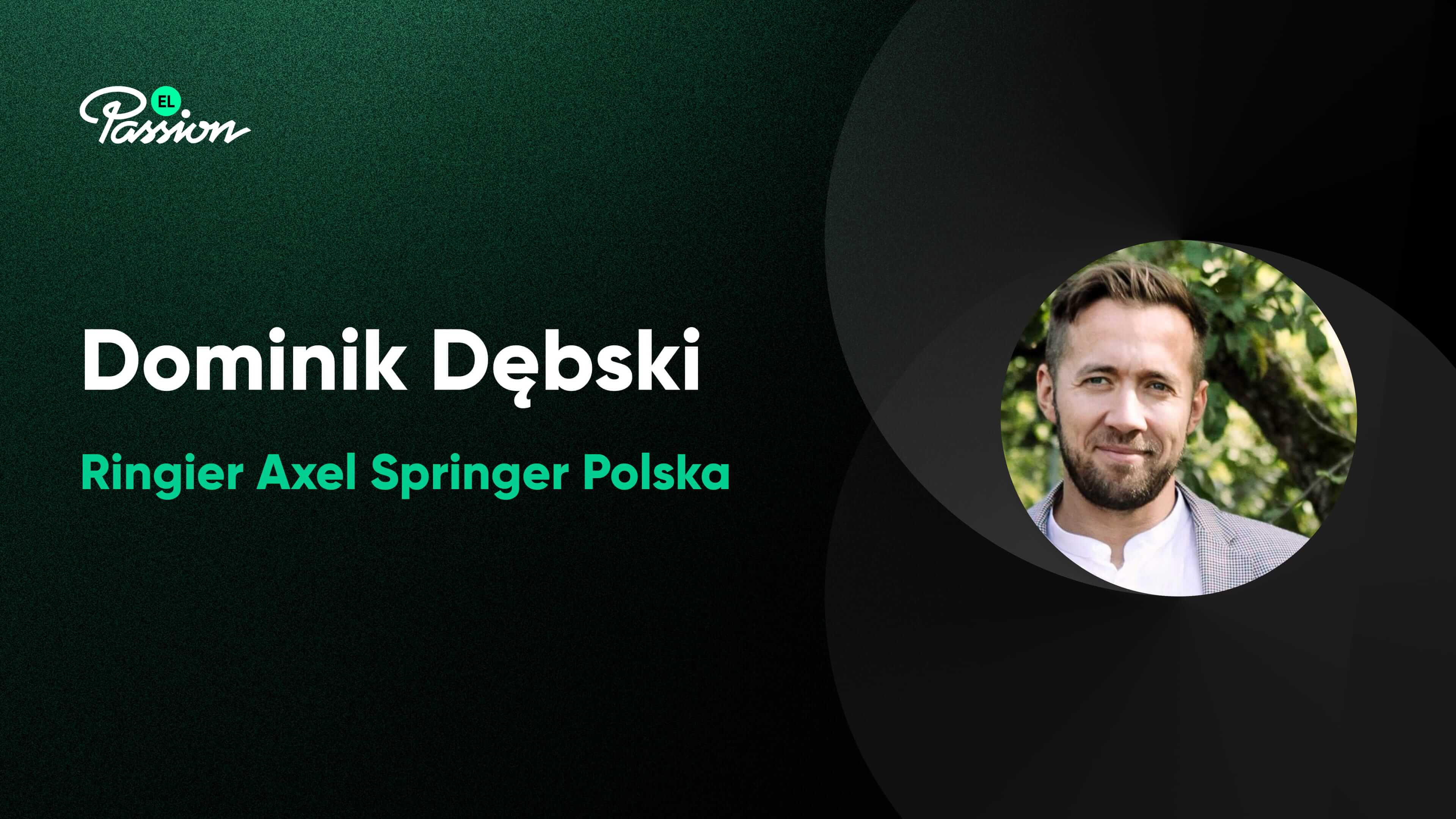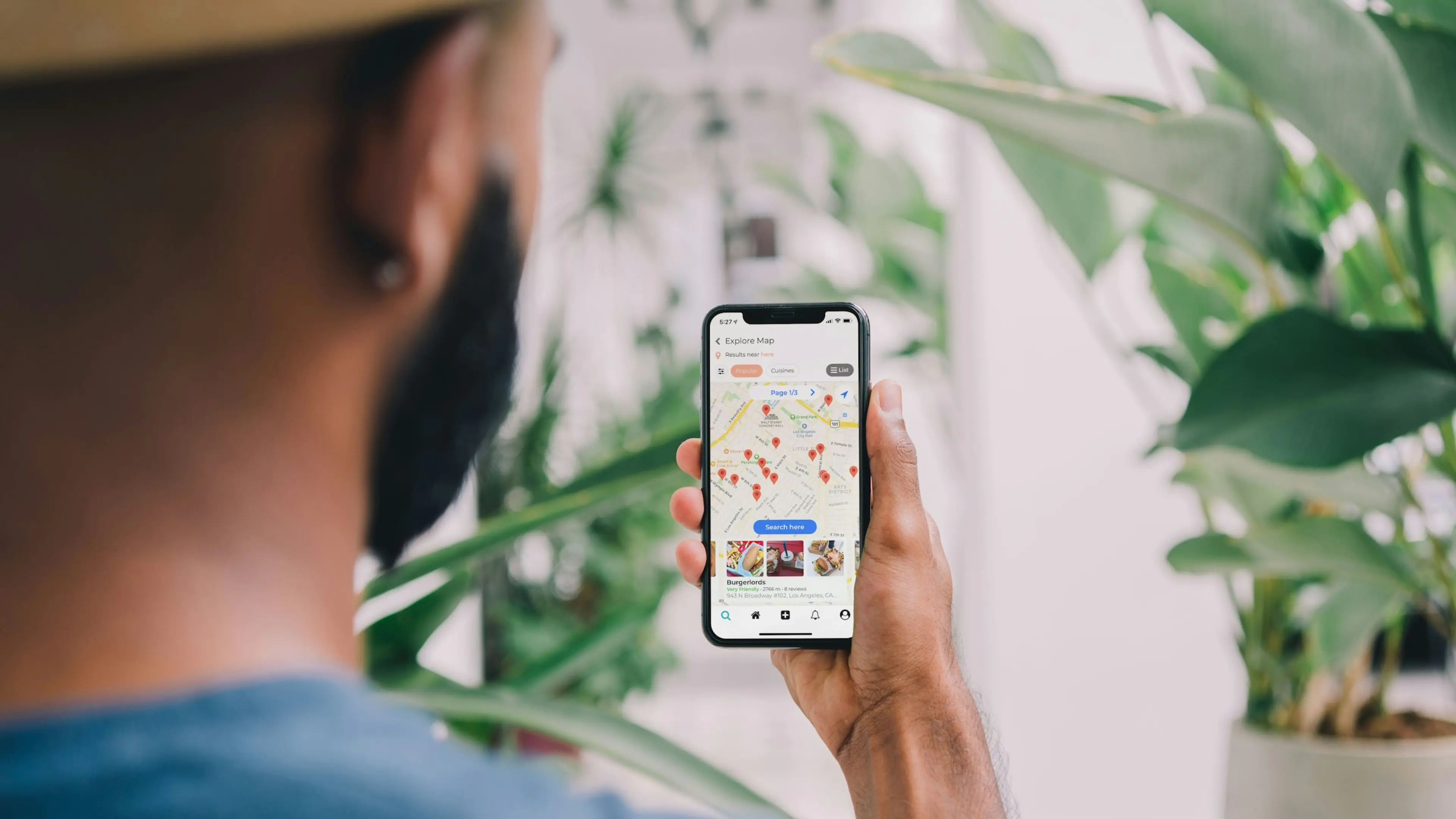30 June 2022 (updated: 30 June 2022)
Publishers' Challenges, Content Monetization, Trends, and More — Interview with Dominik Dębski
Chapters

We’re talking with Dominik Dębski, Head of Product Management at Ringier Axel Springer Poland about the Publishers’ future: content monetization, challenges, trends, and more.
About Dominik

Dominik Dębski is an experienced leader working in the industry for 15+ years. Skilled in Product Management, Martech, Fintech, Adtech, Digital Transformation, Digital Strategy, Performance-based Marketing, and E-commerce. A strong business development professional.
About Onet

Onet is one of the biggest Publishers in Poland and one of the strongest brand in the industry. For 20 years they deliver news, insights, tips, and inspiration to millions of Poles. They are known for short & sharp content enabling users to find themselves in the chaos of everyday information, custom video formats, and their award-winning mobile app with a voice command "Onet, read it to me". Onet is part of Ringier Axel Springer Poland.
Publishers' challenges, content monetization, trends, and more — Interview with Dominik Dębski
Patrycja Paterska: What would you say is the biggest challenge for Publishers in terms of content monetization right now?
Dominik Dębski: The war in Ukraine has had a significant impact on content monetization in general. Much of the content we produce is connected to this topic to a smaller or bigger extent, and this results in a very tricky situation for both the end-users and the advertisers. We obey the brand safety policy, so this kind of content is automatically excluded from our advertising space. But there’s also another challenge I see coming and I’d say it’s as significant for the industry as the introduction of Adblock back in the day, and it will force things to change once again. I’m talking about the death of third-party cookies. I am curious how all of this will play out, but looking at the big picture I think that Publishers should come out unscathed since the majority of them aggregate first-party data; in other words, they are the owners of the platforms and the content that the users in general consume and interact with.
We’ve all seen those accidents-turned-memes where brand safety wasn’t present. I remember this almost legendary picture of what I think was a Ferrari crash, with a Ferrari ad on the side.
There’s a lot of research done on the subject and all of it states pretty clearly that the context of your content is key. First: you have to have trust in the medium. At Onet we do have some of the highest trust numbers in the country; we have different journalists, from entertainment up to some big names in terms of publishing and news, so this adds to the trust users have in us, even if on a subconscious level. But it’s just a fraction of it. Let’s say you’re reading an article about cleaning, and there’s a certain brand visible on the side, not even in an article, it doesn’t have to be sponsored, but just on the side. It may not have an immediate influence on your purchase decision, but if you see this brand in another setting, it does have an impact. And it goes both ways, it can affect your brand positively, but also negatively. Brand safety’s there to exclude or include your brand from certain settings, so you filter those associations and create your overall brand image.
So how do you do it well?
The problem for here and now for many Publishers is that they are seeing all-time highs in terms of traffic that is impossible to monetize. Because of the war in Ukraine, people want reliable information. This is also visible in the annual Digital News Report conducted by Reuters. And it is a business decision not to monetize this content.
But the challenge that is much more complex and universal is to find the right balance and fit your ad communication with the level of engagement from your users. You can always add more ads, but the key here is to understand that they stop working when you reach a certain point, and they just become clutter.
On one hand, you want to have a good product, meaning a trustworthy portal that users come back to, and on the other, you want to have this well-oiled advertising machine that ultimately influences your revenue.
 It's all about finding the right balance between maintaining a trustworthy product that is engaging for your users and adding ads that are relevant for them and support your business at the same time. Source: Unsplash
It's all about finding the right balance between maintaining a trustworthy product that is engaging for your users and adding ads that are relevant for them and support your business at the same time. Source: Unsplash
Recently, you’ve introduced Onet Play, a channel for outstream advertising. What makes it stand out from other types of advertising and what are some of the benefits, looking from the users’ and advertisers’ perspectives?
This is a product available in premium placements within the text of an article and it’s aimed at building positive brand associations we discussed before with regard to brand safety. Onet is a big publisher, so, thanks to our engagement rate, we’re able to support advertisers in their television advertising efforts just as a single medium, or even, in some cases, actually replace TV. And we don’t bill for “views”, but for the ads’ actual viewability, which is a much more quality metric as it shows that the user actually saw the ad, and not just scanned it.
It’s quite a young product, how do you measure its effectiveness?
We cooperate with Brand Metrics to measure the campaign’s impact on the brand’s KPIs, sort of a before and after on how they changed. Every brand has its own set of parameters they want to track. Since we launched the product about six months ago, we’ve done our fair share of campaigns, and yes, it works, the feedback we receive is very positive overall. But it’s also thanks to the media parameters of this product: because of the ads’ design, there’s quite a small number of accidental clicks, so we give advertisers quality traffic.
I think we have yet to discover Onet Play’s full potential in large-scale campaigns, but we’ve done some benchmarking and compared to YouTube, I think we can compete in terms of views, reach, engagement, and building brand awareness. Of course, we’re talking about communication prepared specifically for the Internet audience, not just TV ad duplicates because they’re prone to be less effective. Our attention span online has rapidly decreased in these couple of years, and I think we’re at about 3 seconds, it’s not a lot of time to capture users’ interest. It’s possible, but the message has to be tailored to the medium. Again: context is key.
Ads are one thing. But many Publishers are implementing paywalls right now. How do you encourage users to actually sign up and stay engaged?
Well, in Poland there’s still this notion that “if I search hard enough I will find it for free”, somewhere, somehow.
 People want to pay for good quality content. But implementing a paywall on your website is a marathon, not a sprint. Source: Unsplash
People want to pay for good quality content. But implementing a paywall on your website is a marathon, not a sprint. Source: Unsplash
Streaming and live streaming services are doing a lot in terms of shifting users’ perceptions, and they prove it’s actually worth it to pay for good content and a service you like.
We’re investing in building our own paywall right now. What I can say is that it’s a marathon, not a sprint. So, depending on the service it needs to be introduced in a conscious way, so it’s understandable for users that are willing to pay for it. The quality equivalent needs to be maintained and explained to the users, so they believe it’s for their benefit. And it usually is, because, as the times are changing, the best, premium content written by experts and renowned journalists is behind a paywall.
What can Publishers do to eliminate the situation that's happening right now with streaming services? Netflix is losing users, the clutter in the industry is enormous, and it seems people do not really want to pay for 4 to 5 different streaming services. If the majority of Publishers decide to go behind a paywall how do you retain users?
The problem of subscription clutter is real and the solution is to aggregate. You can’t really aggregate with your direct competitors, it’s understandable, but there are many smaller editorials with a similar target group you can include in one subscription plan, so it fits your users’ needs, and calculates business-wise. There will always be a number of this kind of integrated services, but then we’re talking more about packages, rather than singular services you need to access separately.
You mentioned you’re introducing your own paywall, so how do you do it, how do you get your users to adjust, how to nurture them?
First of all, you need a good strategy on how to guide your users through the whole consumer journey, and do it beyond the point of purchase.
Obtaining customers is one thing, but retaining them, and keeping them happy and satisfied is something completely different. You need to keep tabs on what your users want and give them tangible value or they will find it elsewhere. Retention is key nowadays and it’s a big challenge for all subscription-based services.
We see various levels of engagement among different age groups, so they all need to be approached differently. Young people probably understand paywalls and subscriptions more, and they are more eager to pay for quality. When you give them value and a good product, you can expect they’ll stay with you for a long time. But if you don’t, we’ve got so much content available nowadays, they’ll start looking elsewhere. That’s why enhancing your subscription plans, and giving something extra for the same amount of money is crucial; it’s a way to make users feel valued. There’s no place for overpriced, overhyped, badly planned, and badly carried out subscriptions nowadays.
We talked about diversifying your subscriptions, and what about diversifying your content to make it more appealing to users?
Giving your users choices is essential; for some time now we’re seeing that articles can not only be read and that there’s also audio available, which makes it easier to digest information when you’re actually not able to read, e.g. when driving, walking, at different times of day, etc. We’ve recently introduced podcasts, and, again: there are two ways you can listen to them; with and without video. In my opinion, it’s not enough to have one channel that works, you need to have a whole set of available options and channels to cover all the bases, so you reach your audience in all situations they might be in. Giving your users choice is the future.
As we’re talking about the future, what would You advise coming forward for Publishers in general?
First of all: be consistent, take utmost care of the core product you deliver to your users, the quality of it, and build on it regularly. The impasse can be very costly. On the business side: get your users to want to sign up, and continuously sign in, so they will stay engaged with your platform. Last but not least, on the advertising side – stay humble and deliver the brand massage in a meaningful way. Let the creative be part of the story of your customers – content and advertising wise.
Check out also
- 7 Platform Redesign Tips for Publishers — What to remember during a Publisher’s platform redesign process? See the 7 tips — all based on our hands-on experience working with clients.
- 11 Live & OTT Trends to Keep an Eye Out For in 2022 — Streaming services are growing, but we asked the experts what lies ahead and why. See their predictions on the 2022 live & OTT streaming trends.
You may also like

Native vs Cross-Platform App Development: Which is Right for Your Business
3 September 2024 • Maria Pradiuszyk




